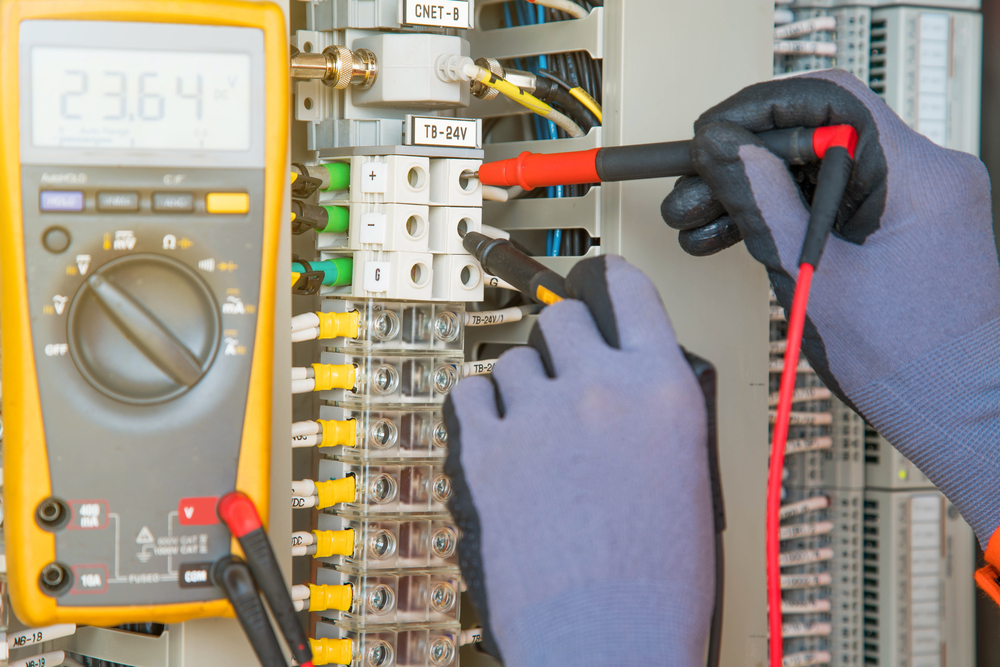An electrical safety program is an essential part of workplace safety. If an employee is doing work on or near equipment or areas that may pose an electrical hazard, it’s important that they have the tools, personal protective equipment (PPE), and knowledge they need to stay safe.
The importance of electrical safety in the workplace cannot be overstated. In 2019, a total of 770 incidents of electrical-related injuries in the electrical industry were reported to the Alberta government. These incidents involved working on overhead powerlines, underground powerlines, and other electrical installations and equipment. Whether it’s electrical or otherwise, it’s important to remember that all incidents are preventable with the correct safety procedures in place.

In 2019, a total of 770 incidents of electrical-related injuries in the electrical industry were reported to the Alberta government. These incidents involved working on overhead powerlines, underground powerlines, and other electrical installations and equipment.
You might be new to developing a safety program for your workplace and want to know how electrical safety fits into it, or maybe you’re wondering what the difference is between electrical work for those who have electrical qualifications (electrical workers), and those who do not (non-electrical workers). Perhaps you’ve just found out that the CSA Z462 standards are updated every three years and are wondering how you and your workers can stay compliant since this standard is recognized in provincial and federal legislation. Regardless of how an electrical safety program fits into your workplace, this article explores the basics of such a program and more.
How Does an Electrical Safety Program fit into a Workplace Safety Program?
An electrical safety program is an essential part of your workplace’s commitment to a safe environment and is just one part of an effective workplace safety program. Electrical work comes with the potential to be exposed to specific hazards that other types of work might not pose, so it’s important that a workplace safety program has an electrical component that covers these hazards. In fact, provincial safety regulations in Canada require that a workplace that regularly deals with electrical work have an effective electrical safety program.
Typically, if a workplace deals with electrical work, then an electrical safety program is developed in tandem with the overall workplace safety program. In other words, it’s not something that is usually developed separately from the main safety program, rather it’s a part of it. If a workplace adopts electrical work after their safety program is developed, then they need to update it accordingly.
Luckily, Danatec offers a DIY electrical safety program, called an Electrical Safety Program in a Box. This templated program is available as an off-the-shelf solution where you can easily customize the content to suit your business. The program contains enough information for any type of business to build its own electrical safety program.
Another essential component of an effective electrical safety program is buy-in from all stakeholders in your company or organization. In other words, safety culture shouldn’t just come from the health and safety professionals, managers, and supervisors in your organization; a culture surrounding safety should be championed by everyone.
When Should I Update my Electrical Safety Program?
Changes to CSA Z462 occur every three years, but you don’t have to wait for new changes to revisit your electrical safety program. Anytime changes occur with what types of electrical equipment or tools your employees may use or come in contact with, you should look at updating your electrical safety program to align with those changes.
Your organization should determine who is responsible for auditing and ensuring all aspects of your electrical safety program stay up to date and are followed. If you want to ensure that your electrical safety program is effective and provides an industry-standard level of safety, an unbiased third-party review of your electrical safety program is a good idea.
What’s the Difference Between Work for Non-Electrical Workers and Electrical Workers?
As an employer, whether it be a building manager, property owner, or otherwise, it’s important to know the difference between electrical workers and non-electrical workers. Not every employee who works on or near electricity will have the exact same training. For instance, in Canada, someone who wants to become an electrician will typically enter an apprenticeship. An electrical apprenticeship involves both classroom-based studies, as well as on-the-job training under a certified electrician.
It’s important to remember, however, that not all electrical workers are electricians – there are electrical technicians, repairpersons, or other types of employees whose jobs are to work with electricity in some capacity. An electrical safety program would consider the different types of electrical workers and the work they do, and how they can work with electricity safely in the job environment.
It also might seem obvious to avoid giving electrical work to non-electrical workers, but in reality, non-electrical workers need to be trained to recognize and handle electrical hazards.
Which Non-Electrical Workers Could Benefit from Electrical Safety Training?
Workers such as industrial plant managers and supervisors, occupational health and safety coordinators, building owners, service technicians, laborers, fitters, painters, and anyone else who works with or around electrical equipment would benefit from electrical safety training. The thought process is simple: if there’s a possibility that an employee could be exposed to electrical hazards while they are working, the employer needs to provide adequate electrical safety training so that said employee can protect themselves from hazards and work safely.
Online electrical safety training for non-electrical workers is available through Danatec and covers workers in both Canada and the USA.
We also offer courses for online electrical safety training for qualified electrical workers in both Canada and the USA. These courses have been updated to follow the latest CSA Z462 standards (Canada) and NFP 70E (USA).
View our Online Electrical Safety Courses
Energized Electrical Job Risk Assessment (EEJRA)
CSA Z462 requires a mandatory risk assessment to be completed for energized electrical work tasks on a job site. A qualified electrical worker would be the onsite person to perform an EEJRA and answer any questions or concerns regarding electrical hazards.
Typically, you’d have a standardized work procedure in place based on the job, with an EEJRA as an additional step that would be performed for each new job. An EEJRA is basically a checklist that identifies specific electrical hazards that may be present on a job site. The purpose of the EEJRA document is not only to identify potential electrical hazards but determine the likelihood of injury or damage to health to employees if they are exposed to these hazards. The ideal scenario would be to avoid these hazards entirely, but we all know that isn’t always possible, so an EEJRA is just another tool in your arsenal to help you determine the best course of action to keep everyone as safe as possible.
The technical aspects of determining electrical hazards are outlined in CSA Z462 Clause 4.1.7.8.
Creating an Electrical Safety Program
Understanding the hazards of energized work is important for any business that works with electricity on a daily basis. Developing an electrical safety program for your organization will not only keep you compliant with applicable regulations, but it’ll also help prevent incidents and showcase your commitment to safety.




Comments are closed.